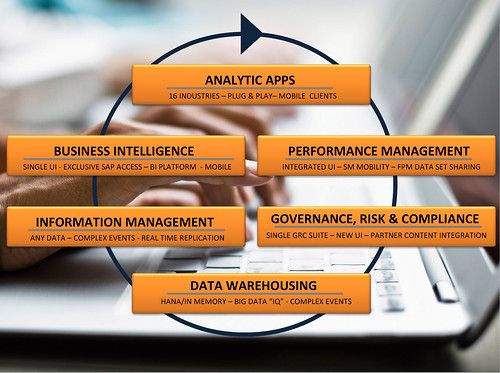The keynotes started with TIBCO’s CEO, Vivek Ranadivé, talking about the forces driving change: a massive explosion of data (big data), the emergence of mobility, the emergence of platforms, the rise of Asia (he referenced the Gangnam Style video, although did not actually do the dance), and how math is trumping science (e.g., the detection and exploitation of patterns). The ability to harness these forces and produce extreme value is a competitive differentiator, and is working for companies like Apple and Amazon.
Raj Verma, TIBCO’s CMO, was up next, continuing the message of how fast things are changing: more iPhones were sold over the past few days than babies were born worldwide, and Amazon added more computing capacity last night than they had in total in 2001. He (re)introduced their concept of the two-second advantage – the right information a little bit before an event is worth infinitely more than any amount of information after the event – enabled by an event-enabled enterprise (or E3, supported by, of course, TIBCO infrastructure). Regardless of whether or not you use TIBCO products, this is a key point: if you’re going to exploit the massive amounts of data being generated today in order to produce extreme value, you’re going to need to be an event-enabled enterprise, responding to events rather than just measuring outcomes after the fact.
He discussed the intersection of four forces: cloud, big data, social collaboration and mobility. This is not a unique message – every vendor, analyst and consultant are talking about this – but he dug into some of these in detail: mobile, for example, is no longer discretionary, even (or maybe especially) in countries where food and resources are scarce. The four of these together all overlap in the consumerization of IT, and are reshaping enterprise IT. A key corporate change driven by these is customer experience management: becoming the brand that customers think of first when the product class is mentioned, and turning customers into fans. Digital marketing, properly done, turns your business into a social network, and turns customer management into fan management.
Matt Quinn, CTO, continued the idea of turning customers into fans, and solidifying customer loyalty. To do this, he introduced TIBCO’s “billion dollar backend” with its platform components of automation, event processing, analytics, cloud and social, and hosted a series of speakers on the subject of customer experience management.
We then heard from a customer, Chris Nordling, EVP of Operations and CIO of MGM Resorts and CityCenter, who use TIBCO for their MLife customer experience management/loyalty program. Their vision is to track everything about you from your gambling wins/losses to your preferences in restaurants and entertainment, and use that to build personalized experiences on the fly. By capturing the flow of big data and responding to events in realtime, the technology provides their marketing team with the ability to provide a zero-friction offer to each customer individually before they even know that they want something: offering reduced entertainment tickets just as you’re finishing a big losing streak at the blackjack tables, for example. It’s a bit creepy, but at the same time, has the potential to provide a better customer experience. Just a bit of insight into what they’re spending that outrageous $25/day resort fee on.
Quinn came back to have a discussion with one of their “loyalty scientists” (really??) about Loyalty Lab, TIBCO’s platform/service for loyalty management, which is all about analyzing events and data in realtime, and providing “audience of one” service and offerings. Traditional loyalty programs were transaction-based, but today’s loyalty programs are much more about providing a more holistic view of the customer. This can include not just events that happen in a company’s own systems, but include external social media information, such as the customer’s tweets. I know all about that.
Another customer, Rick Welts of the Golden State Warriors (who, ironically, play at the Oracle stadium) talked about not just customer loyalty management, but the Moneyball-style analytics that they apply to players on a very granular scale: each play of each game is captured and analyzed to maximize performance. They’re also using their mobile app for a variety of customer service initiatives, from on-premise seat upgrades to ordering food directly from your seat in the stadium.
Mid-morning break, and I’ll continue afterwards.
As an aside, I’m not usually wide awake enough to get much out of the breakfast-in-the-showcase walkabout, but this morning prior to the opening sessions, I did have a chance to see the new TIBCO decision services integrated into BPM, also available as standalone services. Looked cool, more on that later.

